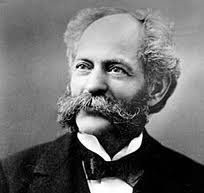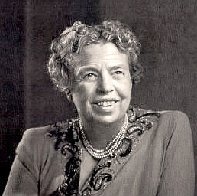Influenza vaccines, also known as flu shots, are vaccines that protect against infection by influenza viruses. New versions of the vaccines are developed twice a year, as the influenza virus rapidly changes. While their effectiveness varies from year to year, most provide modest to high protection against influenza. The United States Centers for Disease Control and Prevention (CDC) estimates that vaccination against influenza reduces sickness, medical visits, hospitalizations, and deaths. Immunized workers who do catch the flu return to work half a day sooner on average. Vaccine effectiveness in those over 65 years old remains uncertain due to a lack of high-quality research.
Vaccines are an effective means to control outbreaks of many diseases. However, vaccines for respiratory viral infections such as flu are still suboptimal and do not offer broad-spectrum protection.
Vaccination against influenza began in the 1930s, with large-scale availability in the United States beginning in 1945. It is on the World Health Organization's List of Essential Medicines.
The World Health Organization (WHO) and the CDC recommend yearly vaccination for nearly all people over the age of six months, especially those at high risk. The European Centre for Disease Prevention and Control (ECDC) also recommends yearly vaccination of high risk groups. These groups include pregnant women, the elderly, children between six months and five years of age, and those with certain health problems.
The vaccines are generally safe, including for people who have severe egg allergies. Fever occurs in five to ten percent of children vaccinated, and temporary muscle pains or feelings of tiredness may occur. In certain years, the vaccine was linked to an increase in Guillain–Barré syndrome among older people at a rate of about one case per million doses. Influenza vaccines are not recommended in those who have had a severe allergy to previous versions of the vaccine itself. The vaccine comes in inactive and weakened viral forms. The live, weakened vaccine is generally not recommended in pregnant women, children less than two years old, adults older than 50, or people with a weakened immune system. Depending on the type it can be injected into a muscle, sprayed into the nose, or injected into the middle layer of the skin (intradermal).The intradermal vaccine was not available during the 2018–2019 and 2019–2020 influenza seasons.
History
Vaccines are used in both humans and non-humans. Human vaccine is meant unless specifically identified as a veterinary, poultry or livestock vaccine.
Origins and development
During the worldwide Spanish flu pandemic of 1918, "Pharmacists tried everything they knew, everything they had ever heard of, from the ancient art of bleeding patients, to administering oxygen, to developing new vaccines and serums (chiefly against what we now call Hemophilus influenzae – a name derived from the fact that it was originally considered the etiological agent – and several types of pneumococci). Only one therapeutic measure, transfusing blood from recovered patients to new victims, showed any hint of success."
In 1931, viral growth in embryonated hens' eggs was reported by Ernest William Goodpasture and colleagues at Vanderbilt University. The work was extended to growth of influenza virus by several workers, including Thomas Francis, Jonas Salk, Wilson Smith, and Macfarlane Burnet, leading to the first experimental influenza vaccines. In the 1940s, the US military developed the first approved inactivated vaccines for influenza, which were used during World War II. Hens' eggs continued to be used to produce virus used in influenza vaccines, but manufacturers made improvements in the purity of the virus by developing improved processes to remove egg proteins and to reduce systemic reactivity of the vaccine. In 2012, the US Food and Drug Administration (FDA) approved influenza vaccines made by growing virus in cell cultures and influenza vaccines made from recombinant proteins have been approved, with plant-based influenza vaccines being tested in clinical trials.
Medical uses
The U.S. Centers for Disease Control and Prevention (CDC) recommends the flu vaccine as the best way to protect people against the flu and prevent its spread. The flu vaccine can also reduce the severity of the flu if a person contracts a strain that the vaccine did not contain. It takes about two weeks following vaccination for protective antibodies to form.
A 2012 meta-analysis found that flu vaccination was effective 67 percent of the time; the populations that benefited the most were HIV-positive adults aged 18 to 55 (76 percent), healthy adults aged 18 to 46 (approximately 70 percent), and healthy children aged six months to 24 months (66 percent). The influenza vaccine also appears to protect against myocardial infarction with a benefit of 15–45%.
COVID-19
An influenza vaccine and a COVID-19 vaccine may be given safely at the same time. Preliminary research indicates that influenza vaccination does not prevent COVID-19, but may reduce the incidence and severity of COVID-19 infection.
Petty Officer 3rd class Tiffany Long administers the influenza vaccination to Chief Petty Officer Romeo Mortel aboard the USS Kitty Hawk (CV 63) on Oct. 28, 2004. The immunizations are provided to all active-duty personnel to prevent the spread of the flu and maintain service members' health. Long serves as a hospital corpsman and is from San Diego, Calif. Mortel is assigned as a personnel man and is from Batangas, Philippines.
If you want to read a whole lot more go here: https://en.wikipedia.org/wiki/Influenza_vaccine
Take your dinner up a notch with this fancy and easy recipe for Bistro Pan-Seared Scallops. Perfectly cooked scallops are made even better with a flavor-packed sauce that you won't want to miss a single drop of!
- 1 pound large fresh or frozen and thawed scallops, drained well
- 1/2 teaspoon salt, divided
- 1/2 teaspoon black pepper, divided
- 3 tablespoons butter
- 2 tablespoons olive oil
- 1/2 cup chopped onion
- 4 cloves garlic, minced
- 2 tomatoes, chopped
- 1/4 cup white wine or chicken broth
- 1 tablespoon capers
- Sprinkle scallops evenly with 1/4 teaspoon salt and 1/4 teaspoon pepper. In a large skillet over medium-high heat, melt butter; saute scallops 3 to 4 minutes per side, or until browned and firm in center. Remove to a platter and cover to keep warm.
- In the same skillet over medium-high heat, heat oil until hot; cook the onion, garlic, tomatoes, and remaining salt and pepper 4 to 5 minutes, or until onion is soft. Stir in wine and capers and continue cooking 3 to 5 minutes, or until heated through. Serve sauce over scallops.

1884 – Eleanor Roosevelt, First Lady of the United States and humanitarian (d. 1962)
Pizza Facts
- In ancient Greece, the Greeks covered their bread with oils, herbs, and cheese, which some attribute to the beginning of the pizza.
- In Byzantine Greek, the word was spelled “πίτα,” pita, meaning pie.
- The Romans developed a pastry with a sheet of dough topped with cheese and honey, then flavored with bay leaves.
- The modern pizza had its beginning in Italy as the Neapolitan flatbread.
- The original pizza used only mozzarella cheese, mainly the highest quality buffalo mozzarella variant. It was produced in the surroundings of Naples.
- An estimated 2 billion pounds of pizza cheese was produced in the United States in 1997.
- The first United States pizza establishment opened in New York’s Little Italy in 1905.










No comments:
Post a Comment